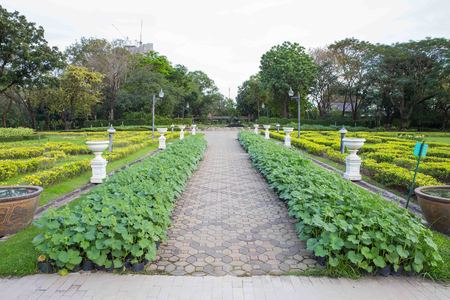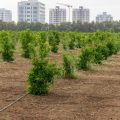Introduction: The Sacred Bond with Seeds
Across the tapestry of Indian tradition, seeds are much more than mere vessels of life—they are threads woven into our spiritual and cultural heritage. In every rural courtyard and bustling marketplace, stories linger about the reverence for seeds, echoing through generations like a sacred chant. Within Hindu belief, the blessings of Goddess Annapurna—the divine provider of food—are invoked to ensure abundance and prosperity. Seeds, or “Beej,” are cherished as her gifts, symbols of nourishment and continuity. This deep connection finds its expression in the ancient philosophy of Beej Bachao, meaning “save the seed.” It is a value passed down from elders to children, celebrated through rituals and festivals that honour nature’s cycles. The act of seed saving is not simply a practice; it is an act of gratitude and stewardship, a way to keep alive ancestral wisdom while nurturing the promise of tomorrow’s harvests. Through these traditional stories, we discover how Indian communities have held seeds close to their hearts—not just as food, but as sacred legacies entrusted to each generation.
2. Elders’ Tales: Passing Down Wisdom
Across the diverse landscapes of India, the echoes of seed-saving wisdom travel like a monsoon breeze—carrying with them the warmth of family, community, and sacred tradition. In every region, stories are softly woven into daily life, especially by grandmothers whose hands have touched both earth and memory. In villages from Rajasthan’s sun-baked sands to the lush paddies of Kerala, elders gather during festivals such as Pongal, Baisakhi, and Makar Sankranti to share tales rooted in the soil and spirit. These are moments when seeds become more than crops; they transform into living heirlooms.
Stories from Grandmothers’ Lap
A popular tale from Gujarat speaks of how seeds of millets were exchanged during Navratri celebrations—a time when villagers danced around bonfires and offered their rarest seeds to friends as blessings for abundance. In Odisha, elders recall ancient rituals where families would tie clusters of rice seeds with red thread and hang them above doors, invoking protection and prosperity throughout the year. Such practices not only preserved biodiversity but also fostered a sense of unity among neighbours.
Oral Histories: The Heartbeat of Seed Exchange
These oral histories are not just stories—they are blueprints for resilience. During harvest festivals, village elders recount how they travelled across rivers and mountains to trade seeds with distant communities. Each exchange was steeped in respect, gratitude, and trust—values that continue to nurture India’s agricultural heritage.
Regional Folktales on Seed-Saving
| Region | Festival or Ritual | Main Story Theme |
|---|---|---|
| Punjab | Baisakhi | Sharing wheat seeds among families for next season’s sowing |
| Tamil Nadu | Pongal | Gifting paddy seeds as tokens of good fortune during harvest prayers |
| Maharashtra | Makar Sankranti | Exchanging sesame and groundnut seeds as part of tilgul tradition |
Through these cherished stories—shared beneath neem trees or beside flickering diyas—Indian elders continue to pass down an enduring legacy. Their folktales nurture hope and wisdom in young hearts, ensuring that seed-saving is forever celebrated as both an art and a blessing.

3. The Bazaars and Melas: Seeds of Diversity
In the heart of India, where life thrums in kaleidoscopic hues, the bustling bazaars and vibrant melas (fairs) are more than just marketplaces—they are living sanctuaries of tradition and biodiversity. Here, amidst the fragrance of fresh spices, the rhythmic clatter of bangles, and the hum of local dialects, the sacred exchange of indigenous seeds unfolds. Farmers, adorned in their region’s unique attire, gather from distant villages, carrying with them precious heirlooms: seeds handed down through generations. Women, revered as custodians of agricultural wisdom in Indian culture, take centre stage at these gatherings. With nimble fingers and stories on their lips, they barter seeds—each variety a testament to resilience, adaptation, and the artistry of nature. These exchanges are not merely transactions; they are acts of trust and kinship, weaving new threads into the tapestry of community.
The bazaar is alive with conversations in Hindi, Tamil, Bengali, Marathi, and countless other tongues—each echoing ancestral knowledge. At every stall or makeshift mat spread on the earth, a different seed tells its own story: millet that survived monsoons; rice shaped by riverine soil; pulses enriched by ancient composting methods. The mela becomes a festive classroom beneath open skies, where seasoned elders share tips about sowing cycles and youngsters listen wide-eyed to tales of bumper harvests and famine years overcome.
This age-old practice sustains not just crops but also India’s vast cultural diversity. Each seed swap strengthens bonds between communities—be it tribal groups from Odisha or smallholder farmers from Punjab—and safeguards native varieties that globalised agriculture threatens to erase. In such spaces, biodiversity flourishes organically: as much in the soil as in the hearts of those who cherish it.
Through these colourful gatherings, India’s legacy of seed saving blossoms anew each season—a living garden where heritage grows wild and free.
4. Cultural Rituals and Seed Preservation
India’s agricultural heritage is deeply woven with vibrant rituals, festivals, and customs that elevate seed saving from a practical activity to a sacred tradition. Seeds are not merely sources of food but cherished symbols of fertility, abundance, and the cycle of life itself. Across generations, Indian communities have developed unique ways to honor and safeguard seeds through cultural rituals that mark the passage of time and reinforce ancestral knowledge.
Navadanya: The Festival of Nine Grains
Among the most celebrated rituals is Navadanya, literally meaning “nine seeds” or “nine grains.” This ritual, often observed during Navaratri, involves the selection and worship of nine distinct seeds representing different crops—each symbolizing prosperity, resilience, and the blessings of nature. Women in rural households carefully select heirloom seeds from their family reserves, sowing them in small pots filled with sacred soil. The sprouting of these seeds over nine days is a spiritual affirmation of growth and sustenance for the coming season. The act is not only religious but also an occasion to share traditional wisdom about crop rotation, seed selection, and soil health within families.
Sankranti: Harvesting Hope and Heritage
Sankranti, a pan-Indian harvest festival, further highlights the central role of seeds in cultural expression. During Sankranti, families celebrate by exchanging freshly harvested grains and seeds with neighbors—a gesture symbolizing community prosperity and mutual support. Special dishes made from newly harvested pulses, sesame, and rice are prepared as offerings to deities and ancestors. Elders recount stories of ancient seed varieties cultivated by forebears, fostering pride in indigenous agriculture among younger generations.
Symbolism of Seeds in Rituals
| Ritual | Main Seeds Used | Cultural Significance |
|---|---|---|
| Navadanya | Rice, wheat, millet, chickpea, barley, black gram, green gram, maize, sesame | Celebrates diversity; prayers for abundance & protection against crop failure |
| Sankranti | Rice, sesame (til), pulses | Marks transition of seasons; promotes community sharing & gratitude to nature |
The Intergenerational Transmission of Seed Wisdom
These rituals serve as living classrooms where children learn about indigenous crops, traditional farming methods, and ecological stewardship from their elders. By involving all generations in seed selection, preservation practices, and storytelling sessions during festivals, Indian culture ensures that the art of seed saving—and the love for Mother Earth—continues to blossom across centuries.
5. Wisdom from the Land: Traditional Techniques
Across the sun-drenched fields and bustling courtyards of rural India, ancestral wisdom whispers through every harvest. The art of seed saving—an act both sacred and practical—has flourished here for centuries, woven into the fabric of daily life. These time-honoured methods, passed down from grandmothers to daughters, fathers to sons, ensure that the promise of tomorrow is always cradled in the seeds of today.
Ash Storage: Nature’s Gentle Guardian
In many villages, elders teach the gentle practice of ash storage. After the hearth’s fire dies down, its soft grey remains are collected and lovingly mixed with seeds. This layer of ash serves as a natural shield, protecting precious grains from pests and moisture—a technique that keeps pulses and millets safe until the next sowing season. For generations, families have whispered stories of how this simple touch of earth preserves not just seeds, but hope itself.
Neem Leaves: The Bitter Blessing
The neem tree, known locally as “the village pharmacy,” stands tall in countless Indian homesteads. Its leaves, rich with protective oils, are tucked between layers of stored seeds. Grandmothers recount tales where neem’s bitter scent deters insects and fungus, allowing seeds to rest undisturbed through humid monsoons. This wisdom—drawn from nature’s own remedies—reminds us that sometimes, the most powerful solutions grow quietly in our own backyards.
Clay Pots: Earthen Embrace
In southern and central India, the humble clay pot is more than a vessel—it is a symbol of abundance and continuity. Seeds sealed within these earthen jars are kept cool and dry, protected from the vagaries of weather. Each pot is marked with sacred symbols or coloured threads, signifying family lineage and blessings for future harvests. Through these traditions, children learn that every handful of soil contains both memory and promise.
Carrying Wisdom Forward
These traditional techniques are more than just practical—they are acts of reverence for land and lineage. They remind us that each seed carries not only food for the body but stories for the soul. As modern India surges ahead, these methods continue to root communities in their heritage, ensuring that wisdom from the land is never lost but always growing.
6. Lessons for Tomorrow: Seed Saving in Contemporary India
As we stand at the crossroads of tradition and modernity, the ancestral stories of seed saving continue to breathe life into the fields and hearts of contemporary India. These tales, woven from the wisdom of elders and the songs of village gatherings, are not just echoes of the past—they are blueprints for a resilient future.
Bridging Generations with Seeds and Stories
Across rural landscapes, communities recall how their forebears cherished local varieties—be it the fragrant basmati from Punjab or the hardy millets of Karnataka. Today’s farmers honour these legacies by reviving heirloom seeds, often through community-led Beej Bachao Andolan (Save the Seeds Movement) and local Beej Banks. This intergenerational exchange ensures that knowledge is not lost in translation but flourishes in shared soil.
Innovation Rooted in Tradition
Modern Indian agriculture faces unique challenges—climate change, monoculture, and market pressures. Yet, inspired by age-old narratives, young agripreneurs blend traditional practices with innovative solutions. From organic farming collectives in Tamil Nadu to women-led seed cooperatives in Odisha, these initiatives embody the spirit of jugaad, resourcefulness that turns every challenge into opportunity.
Sowing Well-being Beyond Crops
The act of saving seeds is more than an agricultural practice; it is a celebration of biodiversity, food sovereignty, and community well-being. By embracing both old-world wisdom and new-age technology, Indian farmers build resilient food systems that nourish body and soul. These efforts ripple through local markets, school kitchens, and family meals—reminding us that each seed carries a story worth preserving.
In reflecting on these ancestral stories, we see a vision for tomorrow: one where tradition inspires innovation, communities thrive in harmony with nature, and every generation becomes a guardian of India’s living heritage. The seeds saved today are not only crops for harvest—they are promises sown for a flourishing future.

